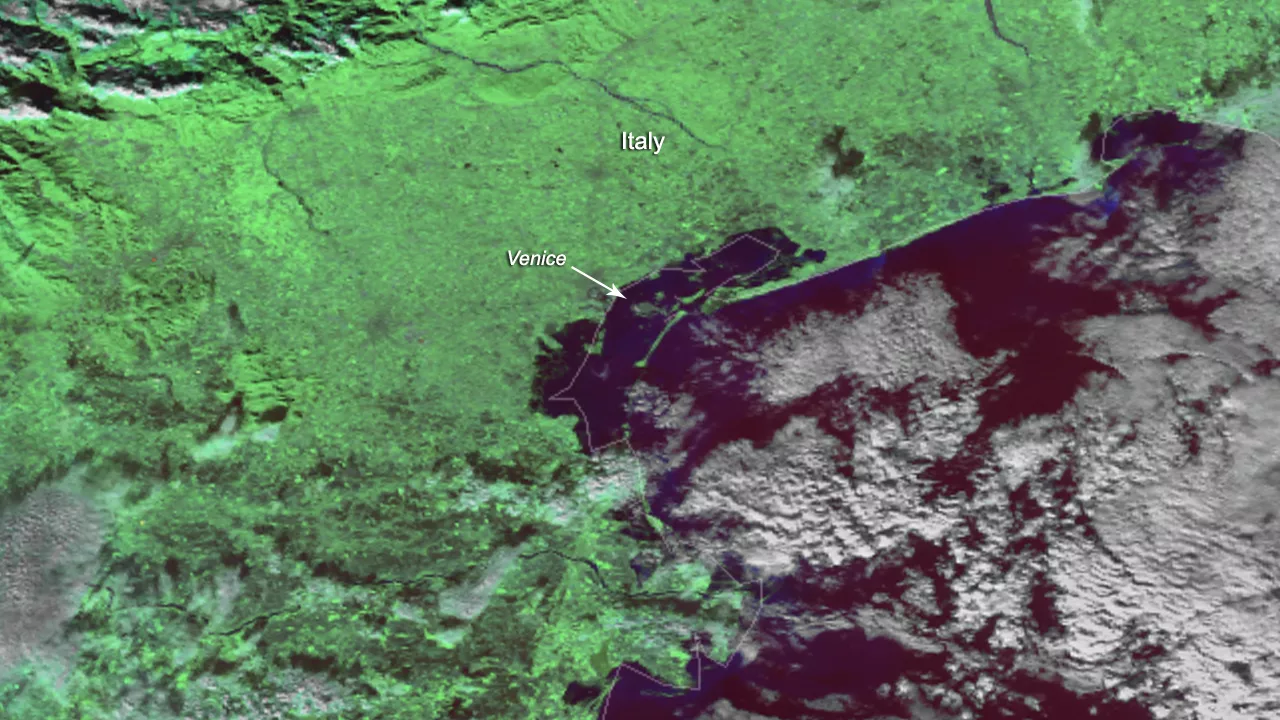
The NOAA-20 satellite captured this image of Venice, Italy, on Nov. 14, 2019, after devastating floods disrupted essential services and seasonal tourism within the city. A local ordinance declared a state of emergency for the city and suspension of municipal services after Venice experienced a tide of 70 inches on the evening of Nov. 12. On Nov. 14, the Tidal Forecast and Reporting Center of Venice tweeted that it was experiencing a 47-inch tide at 10:36 a.m. local time and that they expect a tide of nearly five feet for Friday at 11:20 a.m. due to sirocco winds (hot, humid winds from Northern Africa) coming across the Adriatic Sea. The Tide Bulletin in Venice added that “abundant rainfall in the central-northern areas on Friday will give way to possible cyclonic precipitation on Saturday; the evolution of exact weather patterns remains uncertain.”
Venice, a city that is composed of more than 100 small islands within a lagoon, is especially susceptible to flooding and severe weather. However, the mayor of Venice, Luigi Brugnaro, asserted that this year’s flooding outstrips previous records: “These [floods],” he stated on Twitter, “are the effects of climate change.” Additionally, NOAA records indicate a steady long-term linear trend towards increasing sea levels in Venice. In 1900, when measurements were first recorded, the sea level averaged at 271 inches; in 2020, it is projected to exceed 23 ft.
This image was captured by the NOAA-20 satellite's VIIRS instrument, which scans the entire Earth twice per day at a 750-meter resolution. Multiple visible and infrared channels allow it to detect atmospheric aerosols, such as dust, smoke and haze associated with industrial pollution and fires.
